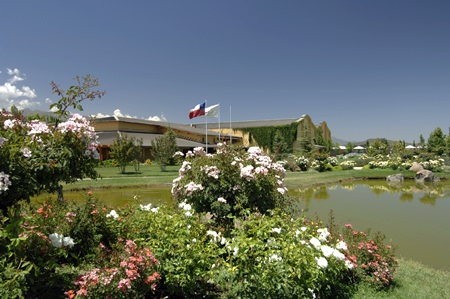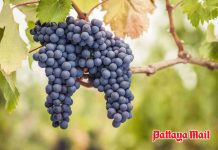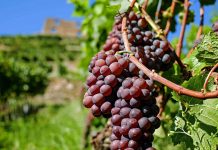For twenty-four hours every day, music is played to the vines at the De Morgenzon farm in Stellenbosch. But not any old music, you understand. According to owner Hylton Appelbaum, the vines respond best to Bach, Corelli and Albinoni, which I suppose demonstrates their good musical taste. Among the hills of Montalcino in Tuscany, the Sangiovese vines at the Paradiso di Frassina winery are serenaded with recordings of Mozart every day. On the other side of the world in New Zealand, Peter Yealands of Yealands Wine Group plays classical recordings to his vines continually and produces splendid wines that have won many awards.
If music seems to have an influence on the vines, could there be any relationship between wine and music? In his book Postmodern Wine Making, wine expert Clark Smith writes, “Music pairing can greatly improve your chances of enjoying a wine. Wine is liquid music, for it has the capacity to embody a spectrum of emotional modalities, to exhibit harmony or dissonance, and it has the power to transport us from care and circumstance.”
 The Anakena Winery
The Anakena Winery
Petr Janata, assistant professor of psychology at the Center for Mind and Brain at UC Davis, claims that the areas of the medial prefrontal cortex responsible for identifying familiar music overlap with those for sensing smells. So perhaps there’s something in it after all.
It seems to be agreed that the human tongue doesn’t convey much information to the brain about taste. Compared to the other sensory organs, the tongue seems to be rather crude, capable of detecting only five different tastes. So how do we manage with complex tastes? Tom Finger, of the University of Colorado School of Medicine at the Anschutz Medical Campus argues that “The sensation of flavour is actually a combination of taste and smell.” Although the tongue can detect qualities like texture and mouth-feel it’s estimated that about ninety percent of what we perceive as taste is actually smell, detected of course by the nose. When you chew, air is forced through your nasal passages, carrying the smell of the food along with it.
Science journalist Jonah Lehrer feels that because the tongue is somewhat vague in its messages to the brain, we are forced to “constantly parse its input based upon whatever other knowledge we can summon to the surface.” The tongue seems to be “a servant of our more efficient senses which help us fill in the perceptual gaps.”
One of these more efficient senses of course is hearing, and studies are beginning to show that music can influence the brain’s perception of taste. A study was undertaken by Adrian North of Heriot-Watt University in Edinburgh and it seemed to show that our perception of wine can be influenced by music. He tested the taste perceptions of 250 university students and the results showed that the music had a consistent effect on the participants’ perception of the wine.
Yes, I know it’s all terribly subjective and there’s some long way to go before we have any solid scientific evidence. But I mention all this because Cantavida means “the singing life” and I wanted a musical theme. The wines are made by the relatively new Anakena Winery based in the Alto Rapel Valley. The first vineyards were planted in 1999 and quality has been the watchword. The grapes are hand-picked and the grape-must is fermented in stainless steel tanks to preserve the freshness. The wine makers have already achieved international success and claimed many distinguished awards. It’s easy to see why.
Cantavida Sauvignon Blanc 2012 (white), Chile (Bt. 549 @ Villa and others)
Central Valley is Chile’s most famous wine region and this wine comes from grapes grown near the Andes. It’s a delicate yellow-gold colour, with an aroma of peaches and gooseberry with a faint whiff of pineapples. The Sauvignon Blanc (soh-vee-NYON BLAHN) grape tends produce wine that is firmer and drier than Chardonnay and there’s a pleasing grassy freshness about the smell. It’s dry of course but the taste is full of ripe fruit with a medium body and a fresh zesty quality which gives way to a clean, refreshing finish. There is quite a very prolonged after taste of peppery herbs. At just 12.5% alcohol this would make an excellent aperitif and I’d be happy to drink this on its own anytime. However, if you want food with it, I’d suggest poultry, seafood, salmon or a simple salad. As for the music, try drinking the wine with something fresh and chirpy.
Cantavida Cabernet Sauvignon 2011 (red), Chile (Bt. 549 @ Villa and others)
The black Cabernet Sauvignon grape (ka-bair-NAY soh-vee-NYON) hails from Bordeaux, and this deep ruby-red wine has a powerful fruity aroma of ripe cherries which fairly hits you on the nose. But behind the cherries are more subtle hints of fruit and peppery herbs. There’s also a pleasing suggestion of waxy crayons, which is more appealing than it sounds. The wine has an amazing smooth mouth-feel; almost silky in texture. It’s fairly dry, with loads of flavour and an excellent balance of fruit and light tannins. There is a good longish aftertaste too, usually the sign of a well-made wine.
I’d suggest that you open the bottle about half an hour in advance and in this climate, stick it in the fridge to “firm-up” the body. With its hints of oak, and 13% alcohol content, this is very much a food wine; red meat or fairly rich pasta dishes spring to mind. It could also go well with a rich quiche or assertive cheese dishes.
So, I hear you ask, what’s the best music for Cabernet Sauvignon? Clark Smith feels that red wines need either a minor key or music with “negative emotion”. Cabernets, he says like angry music. So how about Shostakovich’s Symphony No. 13? Or perhaps Mars from “The Planets” by Gustav Holst? You can’t get much angrier than that.
If you want to know my personal choice for tasting wine, it’s easy. I prefer total, complete silence. Even the dogs are warned to keep quiet.




